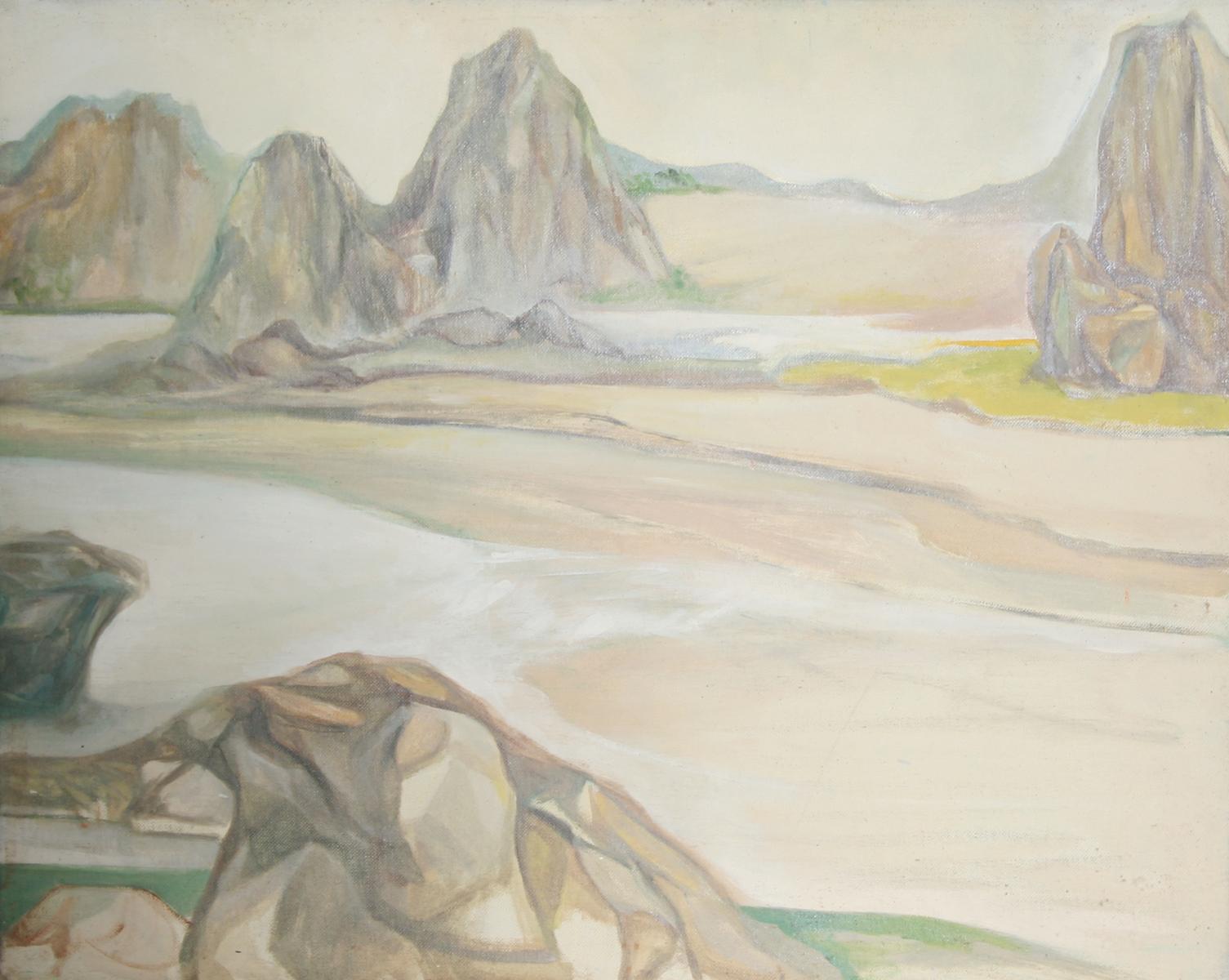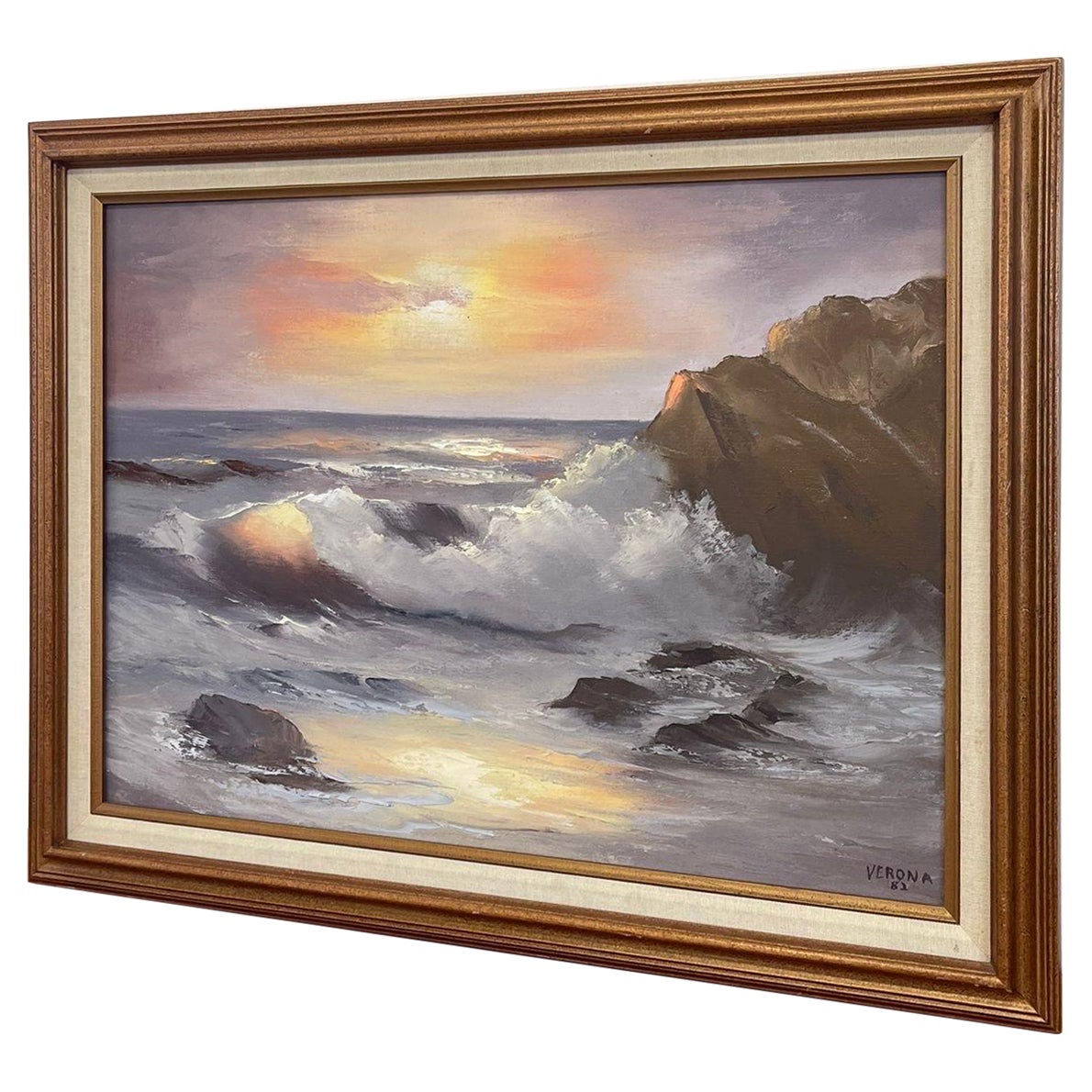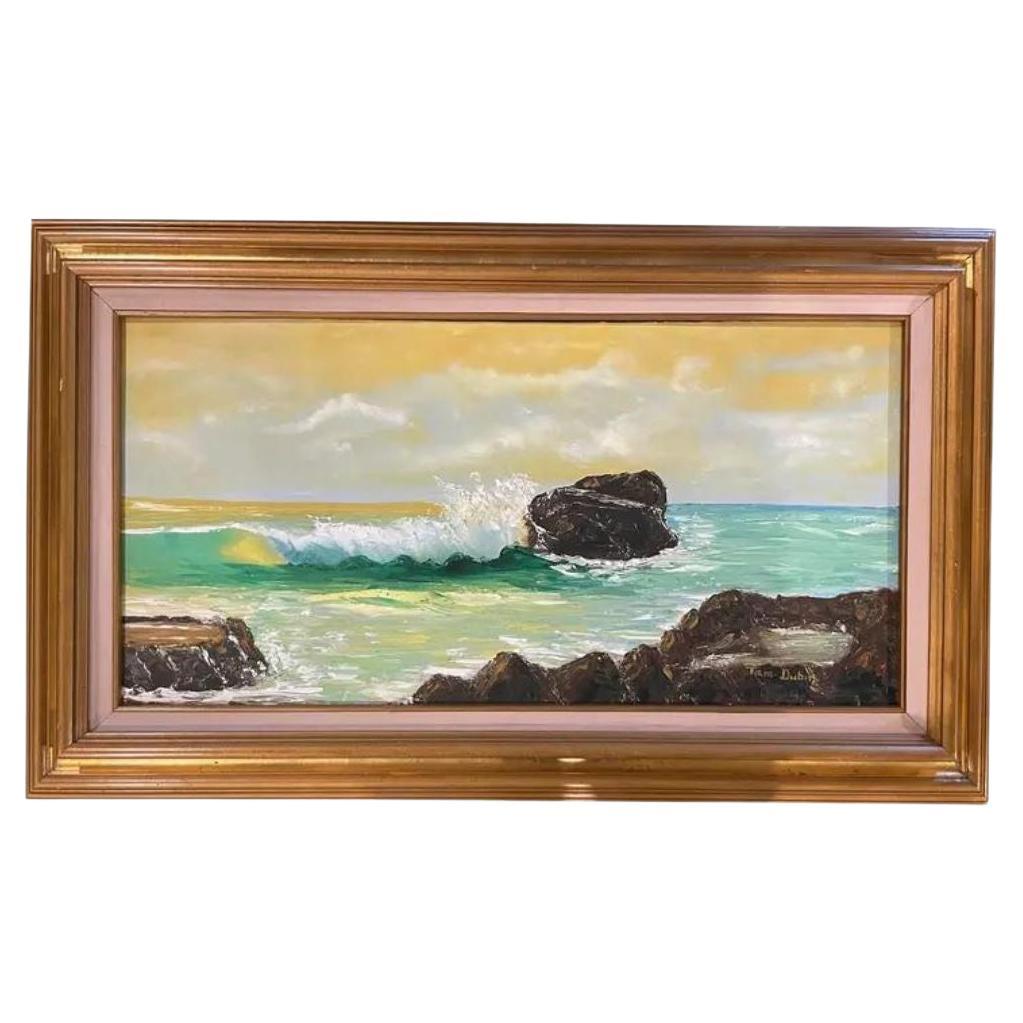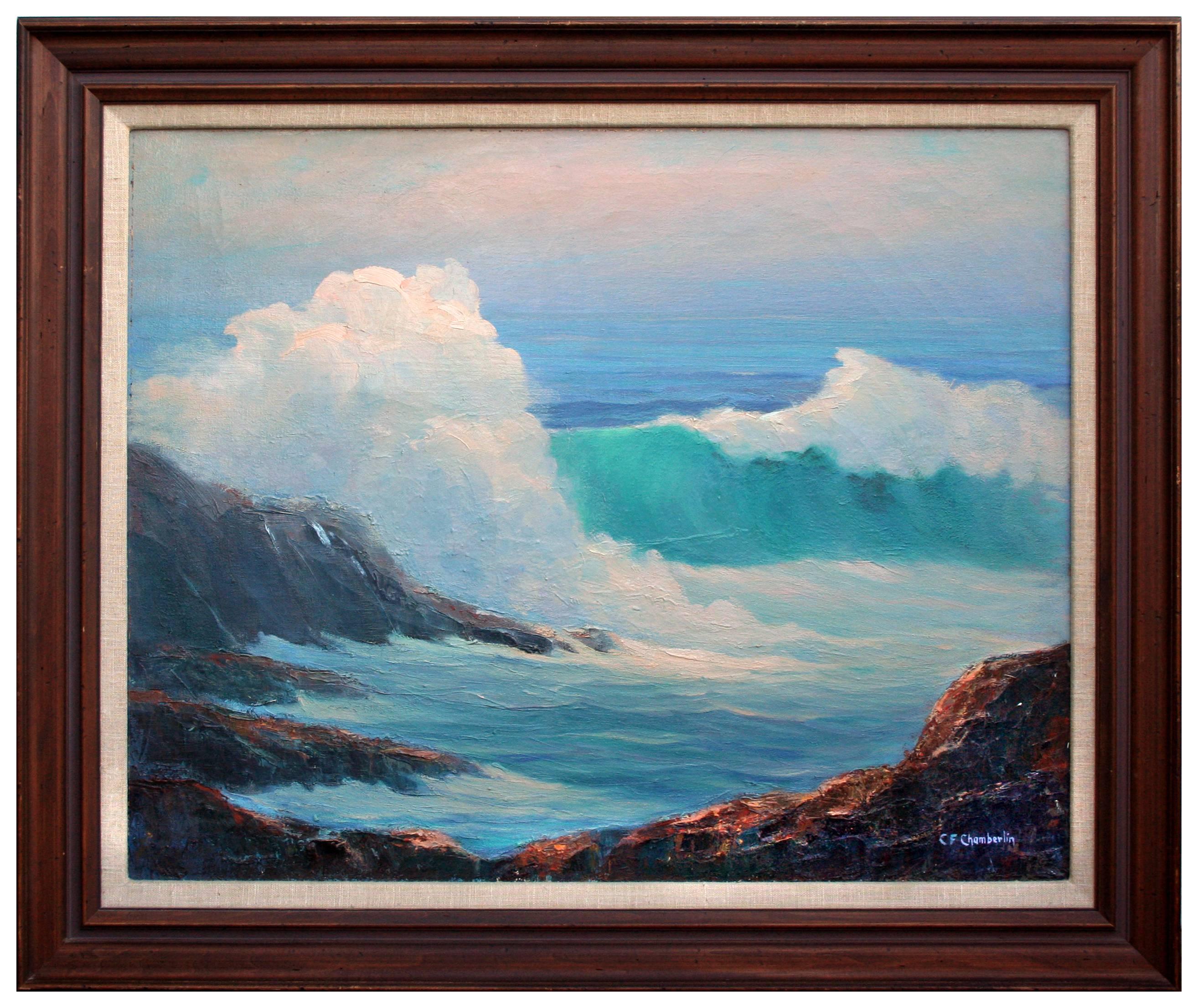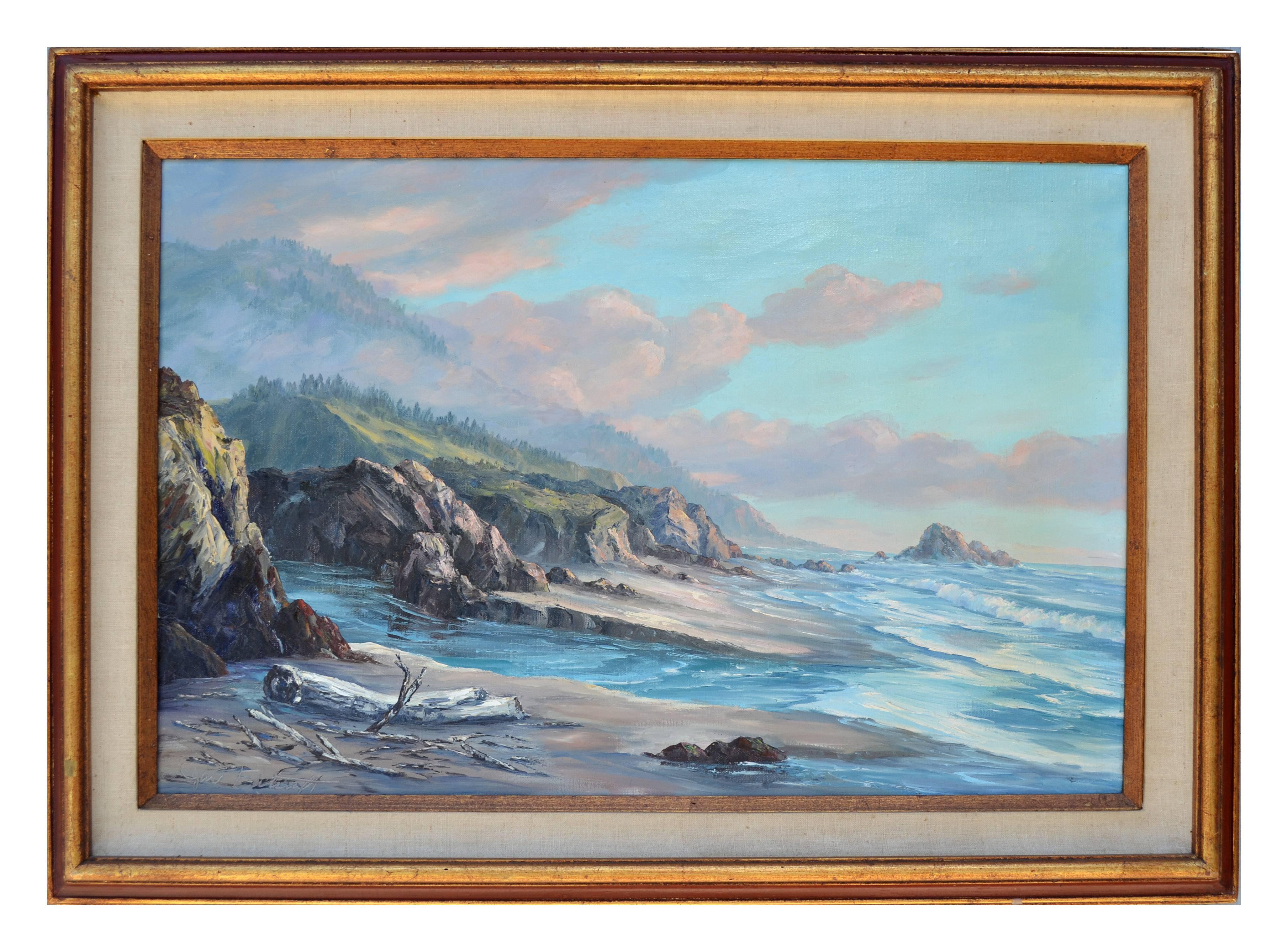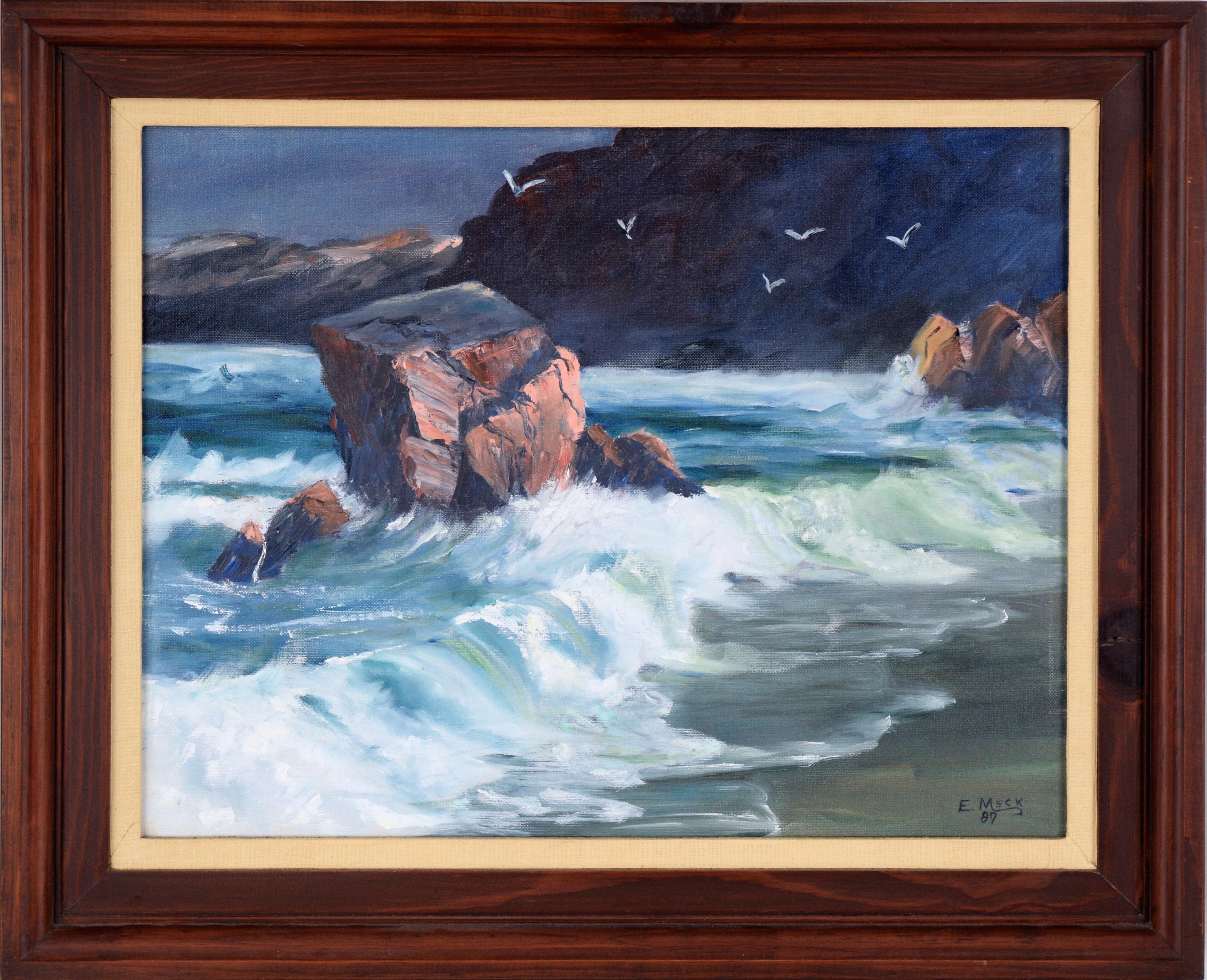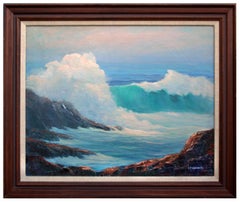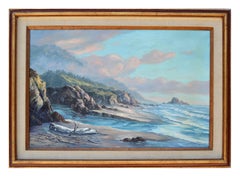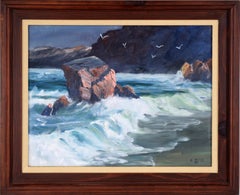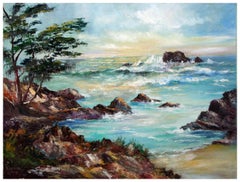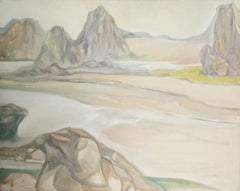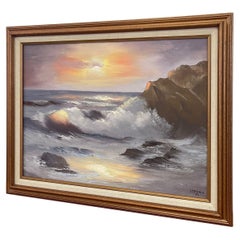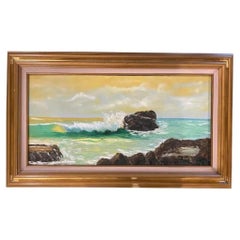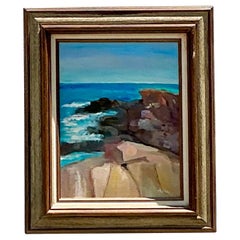Items Similar to "Sea Cliff" Mid Century Modern Coastal Cliff Seascape in Acrylic on Masonite
Want more images or videos?
Request additional images or videos from the seller
1 of 13
Farren Jensen"Sea Cliff" Mid Century Modern Coastal Cliff Seascape in Acrylic on Masonitec. 1970
c. 1970
$1,500
£1,138.77
€1,302.52
CA$2,095.72
A$2,330.90
CHF 1,217.12
MX$28,364.52
NOK 15,544.49
SEK 14,577.99
DKK 9,721.17
Shipping
Retrieving quote...The 1stDibs Promise:
Authenticity Guarantee,
Money-Back Guarantee,
24-Hour Cancellation
About the Item
"Sea Cliff" Mid Century Modern Coastal Cliff Seascape in Acrylic on Masonite
Expansive seascape by notable California artist Farren Jensen (American, 1901-1991). The viewer is standing on the shore, looking out along the coast. Steep cliffs rise dramatically from the sea, with rich vegetation at the top. The cliffs recede into the distance, partially obscured by fog. A lone Seagull watches for signs of a possible dinner.
Signed "Farren Jensen" in the lower right corner.
Artist's sticker on verso with title and name.
Presented in a period appropriate wood frame with a linen liner.
Frame size: 31"H x 27"W
Board size: 24"H x 20"W
Farren Jensen (American, 1901-1991) was born in Utah and began painting in 1961 while touring the Southwest, but his interest in painting began in his childhood. He studied with Jade Fon of San Francisco, Jon Blanchette (an Aptos artist), and Carl Martin. Jensen lived much of his life in Tracy, California, where he was superintendent of Shell Oil Company Pipe Lines Northern Division. Many of Farren’s paintings depict Western landscapes of Utah and California Seascapes, inspired by his travels throughout the United States.
Selected Shows and Exhibitions
1974 – Menlo Park Library, Menlo Park, CA
1973 – Palo Alto Art Club, Palo Alto, CA
1967 – Pogonip Country Club, Santa Cruz, CA
1968, 1969, 1971, 1973, 1975, 1977 – Rob Roy Gallery, Aptos, CA
Memberships
Founding member of 18 artists that began the Rob Roy Gallery, Aptos
President, Rob Roy Gallery, Aptos
President, Pajaro Valley Artists
- Creator:Farren Jensen (1901 - 1991, American)
- Creation Year:c. 1970
- Dimensions:Height: 31 in (78.74 cm)Width: 27 in (68.58 cm)Depth: 2 in (5.08 cm)
- Medium:
- Movement & Style:
- Period:
- Condition:Very good condition. Professionally cleaned. UV-resistant varnish applied. Frame is vintage and shows minor signs of use and wear (imperfections have been minimized, but included as-is).
- Gallery Location:Soquel, CA
- Reference Number:Seller: DBH94351stDibs: LU54214951382
About the Seller
5.0
Platinum Seller
Premium sellers with a 4.7+ rating and 24-hour response times
Established in 1986
1stDibs seller since 2014
2,957 sales on 1stDibs
Typical response time: <1 hour
- ShippingRetrieving quote...Shipping from: Soquel, CA
- Return Policy
Authenticity Guarantee
In the unlikely event there’s an issue with an item’s authenticity, contact us within 1 year for a full refund. DetailsMoney-Back Guarantee
If your item is not as described, is damaged in transit, or does not arrive, contact us within 7 days for a full refund. Details24-Hour Cancellation
You have a 24-hour grace period in which to reconsider your purchase, with no questions asked.Vetted Professional Sellers
Our world-class sellers must adhere to strict standards for service and quality, maintaining the integrity of our listings.Price-Match Guarantee
If you find that a seller listed the same item for a lower price elsewhere, we’ll match it.Trusted Global Delivery
Our best-in-class carrier network provides specialized shipping options worldwide, including custom delivery.More From This Seller
View AllMid Century Northern California Rocky Shore Seascape
By Cecil F. Chamberlin
Located in Soquel, CA
Gorgeous seascape by Cecil F. Chamberlin (American, 1899-1963) Signed "C. F. Chamberlin" lower right. Displayed in wood frame. Image, 24"H x 30"W.
Cecil F. Chamberlin was born in Santa Rosa, CA on May 5, 1899. Chamberlin was educated at Stanford University and then studied art at the CSFA. He then taught art in San Francisco for many years. During the later part of his life he lived down the coast in Santa Cruz where he operated an art gallery, lectured, and had many students. He was a nephew of artist Winnie Chamberlin...
Category
1960s American Impressionist Landscape Paintings
Materials
Canvas, Oil
Vintage Coastal Seascape in Oil on Canvas
By Jac Falcraft
Located in Soquel, CA
Vintage Coastal Seascape in Oil on Canvas
Vintage seascape of the California coast by California artist Jac Falcraft (American, 20th century). Wonderfully detailed coastal scene of ...
Category
1970s American Impressionist Landscape Paintings
Materials
Canvas, Oil
Pacific Coastal Seascape in Oil on Canvas Monterey Big Sur
Located in Soquel, CA
Pacific Coastal Seascape in Oil on Canvas
Dynamic seascape by Evelyn Webb Meck (American, 1915-2011). Waves are crashing in around large rocks that a...
Category
1980s American Impressionist Landscape Paintings
Materials
Canvas, Oil
Mid-Century Big Sur Rocky Seascape
Located in Soquel, CA
Dynamic seascape along rocky Big Sur beach with surf by Willard Little (American, 20th century), circa 1940. Aqua blue water, both shallow and deep, reflects the golden sunlight. Are...
Category
1940s American Impressionist Landscape Paintings
Materials
Canvas, Oil, Cardboard
Coastal Cliffs and Rocks - Hurricane Point - Big Sur Seascape in Oil on Canvas
By Kathleen Murray
Located in Soquel, CA
Coastal Cliffs and Rocks - Hurricane Point - Big Sur Seascape in Oil on Canvas
Gorgeous seascape of Big Sur coast by California artist Kathleen Murray (American, b. 1958). The brill...
Category
2010s American Impressionist Landscape Paintings
Materials
Canvas, Oil
Monastery Beach Carmel California Mid Century Impressionist Oil Painting
Located in Soquel, CA
Monastery Beach Carmel California Mid Century Impressionist Oil Painting
Beautiful impressionist style painting of iconic Monastery Beach in Carmel by Charles Hulett (American, 1903...
Category
1950s Post-War Landscape Paintings
Materials
Masonite, Oil
You May Also Like
Sea Cliffs, Oil on Board Painting by American Artist John F. Leonard
Located in Long Island City, NY
Sea Cliffs (54)
John F. Leonard
American (1921–1987)
Date: circa 1965
Oil on Board
Size: 16 in. x 20 in. (40.64 cm x 50.8 cm)
Category
1960s American Modern Landscape Paintings
Materials
Oil, Board
Vintage Signed Framed Original Oceanfront Landscape Artwork.
Located in Seattle, WA
Possibly Oil or Acrylic on Canvas. Beautiful Sunset with Reflections on the water. Signed and Dated in the Lower corner as Pictured. Vintage Condition Consistent with Age as Pictured...
Category
Vintage 1970s Mid-Century Modern Paintings
Materials
Canvas, Acrylic
Mid 20th Century "Ocean Breaking Against Rocks" Original Oil Painting Signed Tam
Located in Cookeville, TN
Vintage Large Oil Painting, Ocean Breaking Against Rocks, Original Painting Signed Tam Dubin. Ornate gold frame. Signed, light greens, yello...
Category
Mid-20th Century Unknown Paintings
Materials
Paint
Vintage Boho Original Seascape Oil Painting on Canvas
Located in West Palm Beach, FL
Capture the invigorating spirit of the coast with this captivating vintage seascape oil painting. An original work on canvas, it beautifully depicts a sunlit rocky shoreline meeting ...
Category
Late 20th Century American Paintings
Materials
Canvas, Wood, Paint
California Coast I – Large Framed Seascape Original Oil Painting by Robert White
Located in Miami, FL
— CALIFORNIA COAST I — BY ROBERT K. WHITE (B. 1950)
Original Oil on Canvas ⚜ Large Scale ⚜ Signed ⚜ Framed
A DRAMATIC COASTAL MASTERPIECE
This large-scale original oil painting by R...
Category
2010s Realist Landscape Paintings
Materials
Oil, Other Medium
Rocky Cove, Mid-20th Century Landscape/Seascape by Cleveland School artist
By Carl Frederick Gaertner
Located in Beachwood, OH
Carl Frederick Gaertner (American, 1898-1952)
Rocky Cove, 1947
Oil on canvas
Signed lower left
24 x 30 inches
31 x 37 inches, framed
Carl Gaer...
Category
1940s Figurative Paintings
Materials
Oil
More Ways To Browse
1974 Watches
San Francisco Seascape
1991 Watch
Painted Sea Shells
Rob Browning
Sea Shell Painting
1967 Vintage Watch
1968 Vintage Watch
1974 Vintage Watch
1975 Vintage Watch
1971 Vintage Watch
Rob Browning Art
American President Lines
Vintage Shell Oil Signs
Mid Century Seagulls
Rob Browning Painting
Seascape Painting Fog
Roy Martin
